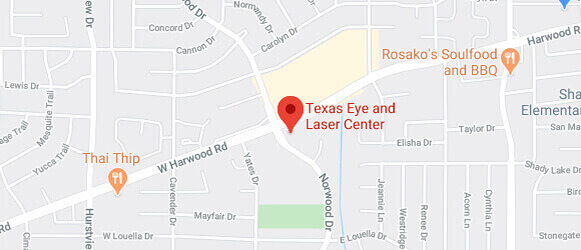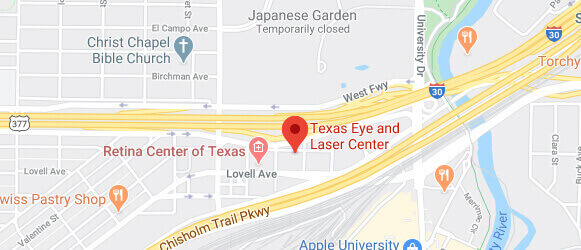Many patients visit us to receive LASIK Surgery at our Fort Worth and Hurst locations. In most cases, individuals have already considered options and decided that LASIK is best for their lifestyle, but it’s important to examine various options and differences between other surgical interventions. Texas Eye and Laser would like to give you a look at two of the most frequented vision correction options – LASIK and PRK.
The mechanism of vision involves refraction, or bending, of light as it passes through cornea and lens to be focused directly into the retina. Certain factors like the shape of eye, age, and structural changes in cornea and lens inhibit successful refraction. When the eye loses the ability to focus, this is called a refractive error. These refractive errors result in blurred vision, which can ultimately affect execution of activities of daily living.
Refractive errors include myopia (nearsightedness), hyperopia (farsightedness), presbyopia (decrease in focusing capacity of the eye due to increasing age), and astigmatism (irregular curvature of cornea resulting to scattered light). Management includes prescription glasses and contact lenses.
Several surgical interventions have been developed to correct refractive errors. Two of the most widely performed surgeries today include photorefractive keratectomy (PRK) and laser-assisted in situ keratomileusis (LASIK).
PRK and LASIK: Choice is Case-to-Case
Many of our patients seeking PRK or LASIK in Hurst, Texas often compare the two and expect one to be generally “better” than the other. In actuality, both LASIK and PRK are frequently used, and the medical choice depends on individual circumstances. For example, PRK is best for patients with thinner corneas and those who have undergone previous eye surgeries. LASIK requires that the ideal candidate typically have had a stable prescription for a minimum of two years and do not suffer from eye pathologies like glaucoma.
PRK was the first refractive error eye surgery, and it is from PRK that the concept of LASIK derived. “Very good” to “excellent” satisfaction rates have been recorded for both techniques. Most importantly, both eliminate the use of prescription glasses and contact lenses for nearly all patients. LASIK Surgery and PRK provided by the Texas Eye and Laser Center in Hurst, Texas have changed the lives of many clients.
Flap Creation vs. Direct Correction: The Main Difference
The main difference between PRK and LASIK is the use of flap. In LASIK, a corneal flap is created using a laser. It is then lifted so the laser can be utilized to shape the layer beneath the flap appropriately. This corneal flap is then returned and allowed to heal. On the other hand, PRK is done without creation of flaps. The whole epithelial layer is removed and an Excimer laser is used to reshape the corneal surface. The site is considered healed when a new layer of cornea has grown.
Healing Time
LASIK has faster healing time than PRK. Most patients can resume daily activities (with a few restrictions) shortly after receiving LASIK at the Texas Eye and Laser Center. Healing occurs more quickly after LASIK because the area is covered by corneal tissue after and only the edges surrounding the flap need to heal. On the other hand, healing after PRK requires a growth of an all new epithelial layer. Patients who receive PRK need to wear eye protection and are given prescription eye drops to safeguard the healing process of the corneal surface. It typically takes 4-7 days before vision starts to come in clear again. Peak visual acuity may also take up to 2-3 months.
In summary, both surgeries were meticulously developed to deliver effective outcomes. The decision of which surgery is best for an individual is based entirely on individual circumstances and the doctor’s clinical judgment. Whether a patient from Fort Worth undergoes LASIK surgery or PRK, they can rest assured that the procedure used is the best option to restore the peak of an individual’s visual acuity.



